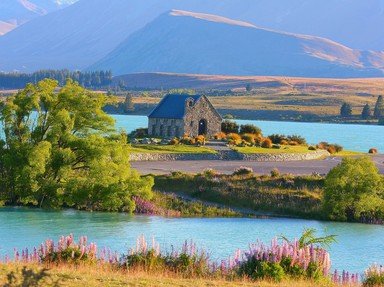Quiz Answer Key and Fun Facts
1. What year did the Dutch trader Abel Tasman sail up part of the western coast of New Zealand?
2. When Captain Cook visited New Zealand in 1769, he was looking for the fabled Great Southern Continent rumoured to lie between Tahiti and New Zealand. But what was his primary reason for being in the Pacific at all?
3. The Treaty of Waitangi was first signed on February 6, 1840. It was essentially a formal colonisation of New Zealand by the British Crown. Why did Britain decide to colonise New Zealand?
4. Who was the man who persuaded the Maori to sign the Treaty of Waitangi in 1840 and who, after the signing, become first Lieutenant-Governor and then Governor of the Colony of New Zealand?
5. Although he's almost always referred to as "Captain Cook", James Cook was called "captain" because he commanded the ship, not because he held that naval rank. What was his actual rank during his first voyage?
6. The first capital "town" of New Zealand was a few kilometres around the bay from Kororareka in the Bay of Islands. Until Hobson and his government arrived, Kororareka was a rip-roaring town of brothels, drinking dens and all manner of other vices, which was known as the "hell hole of the Pacific". What was the name of Kororareka's new, more straight-laced, governmental "suburb"?
7. Captain FitzRoy first visited Kororareka in 1835 when he, with naturalist Charles Darwin, were on the voyage which Darwin made famous when he wrote his book "On the Origin of Species". What, though was the name of the ship they sailed on?
8. The Northern War of 1844, while not the first skirmish between the Maori and the Europeans (or Pakeha), was the first major trial of strength between them. It was started almost by accident by Hone Heke. What did he and his men do which began it?
9. As Europeans began arriving in New Zealand to trade, a new round of tribal warfare broke out almost as a direct result. What was the single most important factor leading to this?
10. Who was the Governor appointed in 1844 who was regarded as the best leader that the infant country had during the New Zealand Wars?
Source: Author
Capfka
This quiz was reviewed by FunTrivia editor
bloomsby before going online.
Any errors found in FunTrivia content are routinely corrected through our feedback system.
